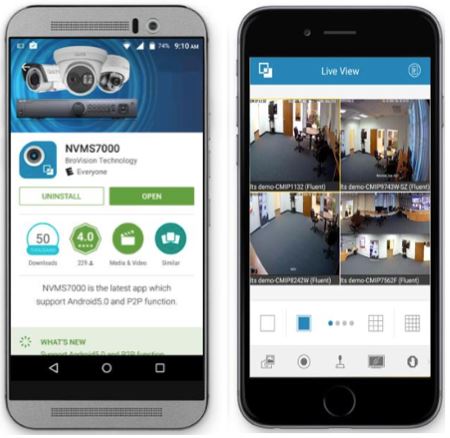

Over the last decade, smart home technology has taken hold and cameras have gotten smaller, better, and cheaper. Chip Somodevilla/Getty Images The smart home approach Also, depending on where you live - for instance, in an apartment - it may not be an option for you at all. You may also have to sign a long-term contract that locks you into the service for several years. Installation costs money, the gadgets cost money, and the monthly monitoring costs money. Professionals will also monitor your home for alerts about things like potential break-ins, fires, and carbon monoxide leaks - and contact emergency services if needed - so you don’t need to be on call all the time.
ADT VIDEO VIEW MOBILE APP HOW TO
They can be a good option if you’ve got the money but not the technical know-how: Professionals will recommend the best package to you using their home security expertise, install everything, get it connected to your phone lines and the rest of your smart devices if you’ve got them, and show you how to work everything.

But it wasn’t until the 1980s that the technology was advanced (and cheap) enough for mainstream residential home use.ĪDT’s competitors in this space include names like Vivint and Brinks Home Security. The company started out as a telegraph delivery company - the “T” in ADT stands for “telegraph” - eventually branching out to fire and burglar alarms. The undeniable leader in this space is ADT, a company that long predates smart homes, the internet, and even telephones. “For years, the security industry has been encumbered with this notion of, ‘We just sell these ugly little white plastic boxes and sensors, they’re ugly, they’re not very sophisticated,’” said Brad Russell, research director of connected home devices and security for Parks Associates.

For decades, these systems were the only game in town, and consumers paid a lot for them - the installation, equipment, and monthly monitoring fees add up fast. These are the ones that come with the yard signs and window stickers and the classic keypad at the door where you type in various codes when you leave and enter your home. While there are many do-it-yourself options out there for home security, professionally installed and monitored systems remain the leader in the market. Joe Raedle/Getty Images The classic keypad-at-the-door home security system If you’re thinking about getting your own security system, here’s what you need to know. You’re putting a lot of data about your home in the hands of private companies, so it’s important that you can trust what they do with it and how safe they keep it. You may also want to consider not just your home’s security but also your cybersecurity: Some systems have been prone to hacks, which is an especially scary prospect if the hackers are watching live footage of the inside of your home. But any of these systems come with trade-offs, and figuring out what’s best for your needs and your budget can be confusing. These days, home security runs the gamut from a humble, internet-connected camera and a phone app to a professionally installed and monitored set-up that locks down your entire house. For less than $30, I got some peace of mind that my apartment wasn’t being burglarized or burned down in my absence. And even though my lack of internet access meant I couldn’t see the livestream of my apartment, the camera would at least get a recording of the burglar that could be used as evidence. If someone had broken into my apartment, I’m sure the camera would have picked them up - if nothing else, it was extremely sensitive to movement and sound. My first attempt at DIY home security certainly could have gone better, but it wasn’t a total disaster, either. By the end of the week, I was entirely ignoring the alerts. The camera was way too sensitive, sending out multiple alerts per day - all false alarms - that I wasn’t always able to check due to spotty internet service. As one of the relatively small minority of Americans who has been the victim of a break-in - an experience I do not recommend and would prefer not to repeat - I decided to invest in home security by buying a small camera to monitor my apartment and send my phone alerts if it detected any motion or sound in it while I was enjoying a week-long vacation. It has never been easier or cheaper to put some kind of security system in your home.


 0 kommentar(er)
0 kommentar(er)
